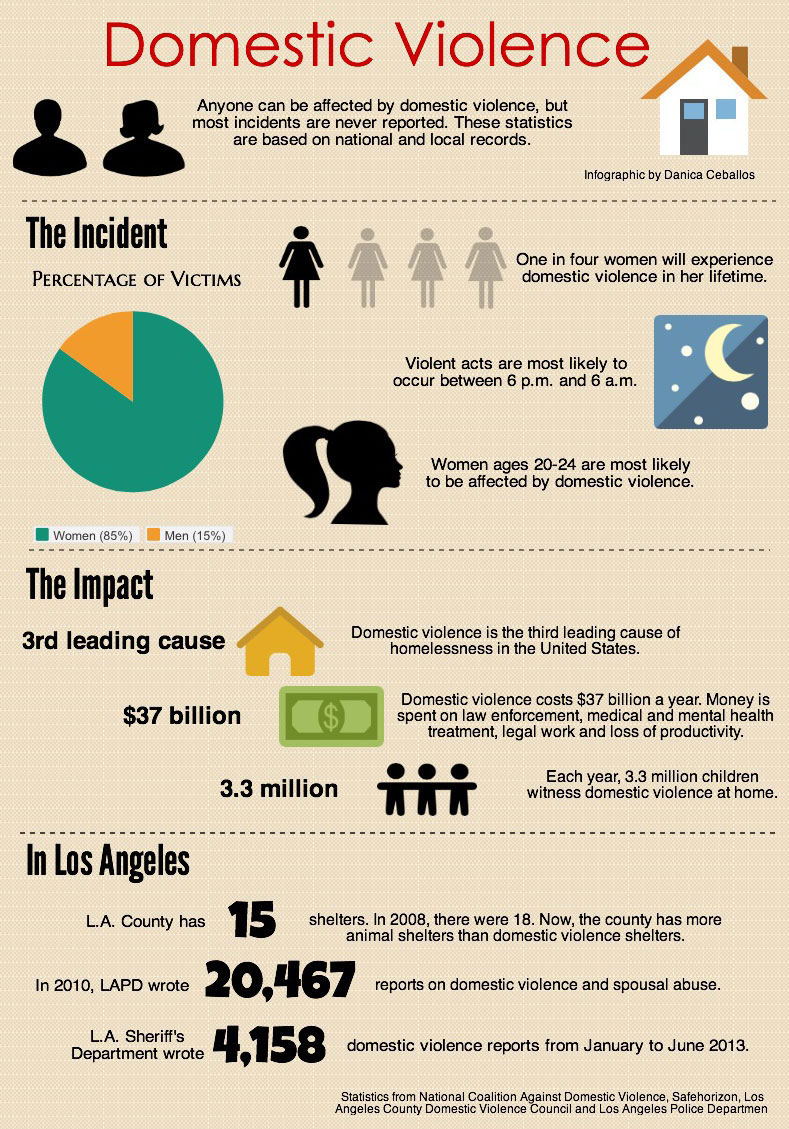
Love can turn ugly. Domestic violence can happen to anyone, regardless of sex, ethnicity, age, class and location.
As Domestic Violence Awareness Month is commemorated throughout October, the National Coalition Against Domestic Violence is reminding citizens that domestic violence remains one of the most underreported crimes in the United States.
“It’s really hard to collect data,” said Los Angeles County Domestic Violence Council Executive Director Olivia Rodriguez. “The information doesn’t encompass everything because a lot of people will not report violence.”
Some of the reasons why domestic violence is underreported include mental health struggles, economic instability and fears that reporting an abuser could separate the family. It can also be difficult for survivors to find help even if they do report the crimes because there are a lack of resources.
Walking away from a violent relationship can be one of the hardest things to do.
“We’ve got to let women know, ‘You can get out,’” said Ronda Minks, an Alexandria House employee. “It’s much better to get out than to live a life of fear.”
Los Angeles county has just 15 government-funded domestic violence shelters, according to the Los Angeles County Domestic Violence Council. The numbers have decreased in the last 10 years because of a redistribution of funds to other groups such as veterans. In addition to these government facilities, there are other shelters that receive private funding and rely on volunteers and small staffs to help support survivors of domestic violence and their families.
Some transitional homeless shelters provide care for survivors, but they may have various requirements. These requirements may include only accepting pregnant survivors or single women. One of the most difficult types of shelters to find are places that accept women and her children.
One of the shelters that offers this option is Alexandria House in Los Angeles. The two-house, nine-bedroom shelter helps women and children get back on their feet by helping them find a home, a job and setting up a detailed plan to accomplish their personal goals in the near-future.
Unlike most government shelters that only allow residents to stay for 30 days, Alexandria House allows women and children to live at the facility for up to two years. However, this option makes makes it difficult for the facility to bring in new women and families because of a lack of space.
“A lot of our phone calls are a lot of moms that are desperate for housing,” explained Alexandria House Associate Director Sunnie Yanez. “The hardest part is to turn people away.”
The acceptance process for Alexandria House is not easy. Potential residents have to meet with employees for a series of interviews. Despite the challenge of getting in, once accepted, most women at Alexandria House describe it as “welcoming” and “home.”
“They showed me, ‘We’re not giving up on you no matter what you do. … We’re going to love you until you love yourself. And even then, we’re still going to love you,’” said Willa Habersham, a former resident at Alexandria House.
The shelter focuses on teaching women how to care for themselves and their children. Residents rotate cooking dinner for everyone in the shelter throughout the week. The women and their families are highly encouraged to attend these dinners to visit with each other.
After residents move out of Alexandria House, they are always welcomed back for past resident meetings and other community events for themselves and their families. The shelter works with the children of survivors by providing childcare, therapy, tutoring and other programs. Many of the women and their families visit often and keep the community and support alive.
Some of Alexandria House’s employees and former residents shared their stories and the ways that shelters like Alexandria House redirect and inspire women to strive for a better life.